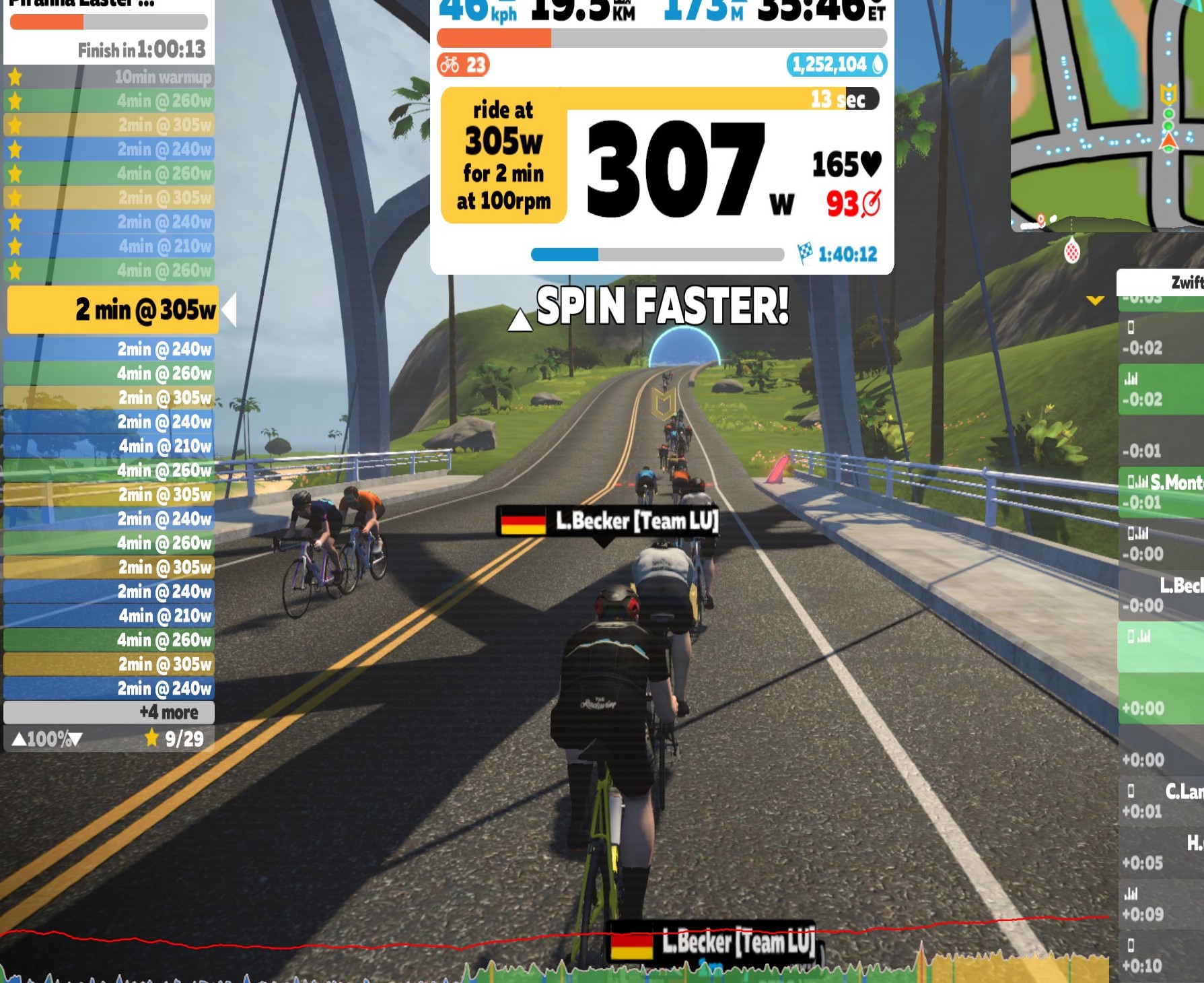Zwift has become an extremely popular online platform for both cyclists and triathletes. It provides an exceptional opportunity to perform rides for training, racing and just for fun indoors in a safe, sheltered environment. It has become extremely popular due to its relative ease of use and user friendly functionality. With the result that thousands of people are active on Zwift everyday.
As Zwift’s popularity grows, so too has its list of features. Zwift now offers training programs and online racing where you can race in real time against other real life cyclists. This racing has not been without its teething problems as there is a massive challenge in coordinating sensors and signals into the game to make speeds both fair and realistic. Nonetheless it’s probably one of the best platforms available for doing this.
There have been many complaints about potential cheating where it is easy to alter the very significant rider weight in game settings. There is also some possibility for poorly calibrated or inaccurate indoor bike trainers to give inaccurate readings leading to dismal or superhuman performance. So one must not get too upset with results as there are variables which must be considered.
Having the ability to complete sessions indoors has always been problematic but Zwift and other platforms make it quite effective. Using ERG mode allows for exceptionally tight control over your intensity level and work/rest durations. Even without the ERG mode, finding virtual hills and sections for intervals is pretty simple and weather and/or traffic is out of the equation.
In addition to the functionality, Zwift can be quite social with group rides and training events held everyday. These can help time pass very quickly and make longer boring sessions much more bearable. This is particularly useful when one cannot ride outside for uncontrollable reasons but may want to stick to the training schedule. There is also an argument that the reduction in time spent coasting down hills is significantly reduced. This may mean overall ride time can be reduced while maintaining the same training effect, although unproven.

Concerns with Zwift.
Like most training tools, when used appropriately they will usually be effective. When used poorly or without purpose we can have a much more detrimental effect. If used specifically for training purposes then Zwift can be a powerful tool. Some, however stray from training and venture into race mode.
Races on Zwift are notoriously intense. There is much more reliance on physical effort than race craft and skill. The result of this is that most races are all out efforts for anyone taking part. While this may be beneficial in certain circumstances, it is very easy to get excited and caught up in racing as they can be great fun. Racing too frequently can derail training programs and also result in overtraining without you even noticing. This is especially true when races replace planned training sessions. It is very easy to push hard in these races, much more so than in training. You may not realize how hard you worked until the race is over or until the next day when you wake up completely exhausted.

In addition to the distraction from structured training, the typical Zwift race intensity will only suit a certain type of event. The races are relatively short and sharp so they will do little to develop aerobic efficiency. They may be much better placed closer to intense races where one might look to develop shorter sustained efforts and sprint capacity. This transfer into real life racing is limited by event type and still comes with a risk of overtraining.
While Zwift racing can be fun, motivating and beneficial, it is worth factoring in these concerns. An over reliance on the race function or too frequent racing is likely to have impact on real world preparations. One must keep in mind racing schedule and training goals.
Not only with regard to Zwift, but in many cases, it can be easy to get caught up in what is popular. Many individuals follow trends which are not suitable to their needs. This can result in a needless waste of effort. It is always important to look objectively and stick to plans. If these type of races are something you want to do then be sure to factor them in so they fit your program rather than hinder it. This applies to other real life events also. Many athletes plan too many races which are either too frequent or too different to their main event. This not only adds clutter to a program but can also foster unfavorable physiological development.When structuring your plan and integrating tools, use common sense as a guide to avoid falling foul of mistakes. Things must suit your plan and address your weaknesses. It can be hard to take an objective perspective on things and you need not be 100% strict, but know that effort and diligence will go a long way with ensuring the success of your training plans.
If you liked this article and found it interesting, then sign up for our newsletter below.
[yikes-mailchimp form=”1″]
